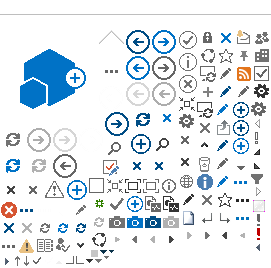One of the most common questions received by the Big “I” Virtual University’s “Ask an Expert” service involves how to provide cross liability coverage under the CGL. The question typically arises from a certificate request for the coverage or, more often, a request to remove across liability exclusion. The term “cross liability” deals with whether or not one insured can sue another under a liability policy. The bad news is that, under the ISO program, there is no endorsement to provide cross liability coverage. The good news is that there’s no endorsement because none is needed—it’s included in the CGL policy itself and has been since 1986:
7. Separation of Insureds Except with respect to the Limits of Insurance, and any rights or duties specifically assigned in this Coverage Part to the first Named Insured, this insurance applies: a. As if each Named Insured were the only Named Insured; and b. Separately to each insured against whom claim is made or “suit” is brought.
Why people still ask for a cross liability endorsement to remove a nonexistent exclusion is a mystery. In fact, some states may have a statutory provision prohibiting the use of cross-suit exclusions in most basic liability policies. To read a more complete coverage analysis of various types of motor vehicles, click here.
Jet Ski ExposuresSome of your customers probably own Jet Skis. Even more will rent or use one if they live or vacation near the coast, lakes or waterways. When insureds rent or operate a Jet Ski, probably the last thing that crosses their minds is what insurance coverage they have. Is there homeowners coverage for damage to the Jet Ski or coverage for bodily injury? What about coverage under a personal umbrella policy?
With boating season not far away, now is the time to send your personal lines customers a reminder about owned and rented watercraft. They might be interested to know that, while Jet Skis account for only about 10% of watercraft, they cause55% of watercraft injuries. More important, since they are classed as inboard watercraft, there is usually no coverage under a homeowners policy for accidents arising out of the use of owned or rented Jet Skis, even thought there usually is coverage for rented outboard watercraft.
For a complete discussion of Jet Ski exposures, click here.
The Stated vs. Agreed Amount
A customer has an antique or specialty auto that you insure on a “stated” amount. That means if the vehicle is destroyed by a covered peril, your insured will collect the stated value, right? The same insured has personal property that you’ve scheduled on the HO-61 endorsement. If that property is destroyed by a covered peril, your insured will collect the scheduled amount, right?
If you agree with these statements, then you’d better check your E&O limits!
The ISO state amount endorsement (PP 03 08) allows an auto to be insured for a stated amount, but it says, “The amount shown in the schedule or in the declarations is not necessarily the amount you will receive at the time of loss or damage for the described property.
The limit of liability is the lesser of the stated amount on the schedule or declarations page, the ACV of the property or the amount necessary to repair or replace the property with property of like kind and quality. There is also a provision for a reduction in payment due to betterment.
For homeowners coverage, the ISO HO 04 61 covers most all scheduled property except fine arts on a non-agreed value basis. The limit is nothing more than the maximum amount of recovery. Fortunately, in the HO2000 program, ISO introduced a new endorsement, HO 04 60, that can be used to cover property on an agreed amount basis.
For a more in-depth discussion of this issue and these endorsements, click here.
Bill Wilson (bill.wilson@iiaba.net) is Big "I" director of the Virtual University, an online learning center for agents and brokers.
